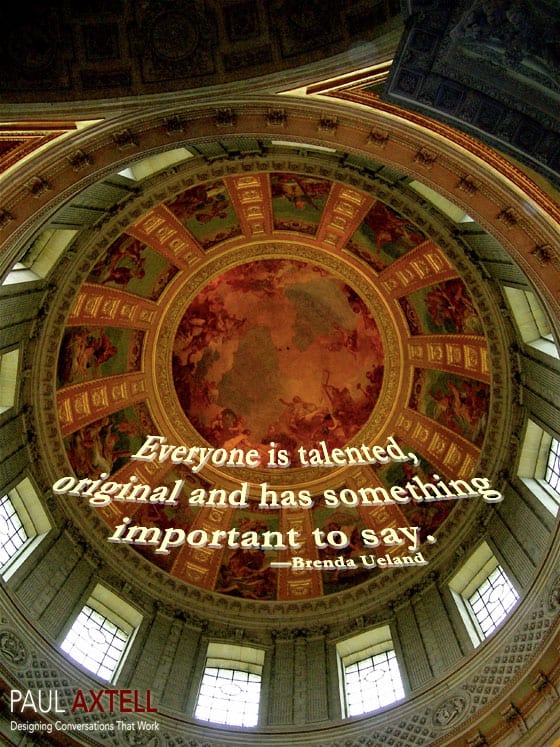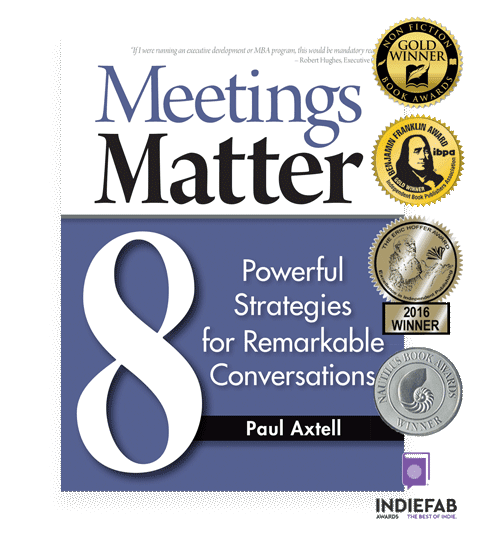Q&A with Kevin Kruse, founder of LEADx
Kevin Kruse believes that wholehearted leadership for employee engagement is the key to unlocking dramatic business results and better relationships for individuals.
And if you think that’s something that I’d agree with, you’re absolutely right. I do.
Kevin interviewed me last year on his LEADx podcast where we had a great conversation about effective meetings, and I’m delighted that he has agreed to do a Q&A. He currently serves as the Founder and CEO of LEADx, an online learning platform that provides free leadership development for millions of people around the world. He has built and sold several multimillion-dollar tech companies, authored numerous books (including the New York Times bestseller We: How to Increase Performance and Profits Through Full Engagement) and currently serves as a Forbes leadership columnist.
Let’s dive in!
Paul: Have you always been interested in leadership? What led you to create LEADx?
Kevin: Well I wouldn’t say always. In fact, I was a horrible boss when I was in my twenties, and my first couple of companies failed miserably. Eventually, I was mentored by some ex-Gallup executives who gave me a master class in leadership and employee engagement, and I had a total transformation. My company started growing like crazy, and we even won a Best Place to Work in PA award.
When I sold my last company, almost ten years ago, I took a lot of time off. I’m a single Dad with three kids and wanted to put them first and also to spend some time working for nonprofits. And that’s also when I started writing books. But my kids are grown now, two are off to college, so I figured it was time to put my entrepreneur hat back on. When I thought about the single biggest factor in my own success, it came down to leadership. Self-leadership, leadership in my family, and of course leadership at work. So I launched a “next generation” leadership company: LEADx.
Paul: LEADx is a completely free learning platform, which is surprising. Why did you decide to make it free?
Kevin: As I was thinking about what my next company would be, it would have been so easy to start another custom e-learning company. That’s what my previous companies were, and I could have just called up my old employees, called up my old clients, and boom—I’d have a multimillion dollar company again in no time. But I did the rocking-chair test. Would I be happy just having another small lifestyle business when I’m 80 rocking away on my porch? Nice life? Sure. But would I be satisfied? No.
So I really want to do something so big that the odds are that it will fail. It’s so big that I don’t know how we’ll get there. So I thought, why don’t we create 100 million leaders in 10 years? After all, if you want free K-12 education you can use Khan Academy. If you want free college education there’s edX. But what about free leadership development? What about free management training? What about free access to professional development? It hasn’t been done yet. So I figure, let’s give it a try.
Paul: You talk about the idea of “Massive Emotional Commitment.” Can you tell us more about what that is?
Kevin: That’s just a common term for employee engagement. I don’t know why people make engagement so hard and confusing. It’s really simple to me. If we actually care about the organization we work for and care about the mission—if we’re emotionally committed to the company—we’re going to give extra effort. An engaged salesperson will sell just as hard on a Friday afternoon as she does on a Monday. A customer service rep will be just as patient at the end of the shift as he is at the beginning of the shift. When we care, we give extra effort, we have fewer accidents, and we stay in our jobs longer.
Paul: On your podcast, you often ask your guests to share a time when they failed and what they learned from that experience. Why do you ask this question?
Kevin: It’s the entrepreneur in me. So many people never do what they really want to do because they’re afraid they’ll fail. Or in life we get scolded by our boss, or we lose a big account, or a publisher rejects our book and we get all bummed out about it. Entrepreneurs are like, “Of course I’m going to fail. I’m going to fail a lot!” It’s just part of the process. So by asking that question—and asking it first—I’m really trying to help all the listeners out there to realize that everyone fails, and everyone fails a lot. It’s required to become successful.
Paul: You also ask your guests to finish up the interview by sharing one idea your audience can put into practice immediately. What are some of your favorite ideas that have been shared?
Kevin: A simple life-changing idea was offered by Dan Pink who said every morning, the first thing he does is write his most important task—MIT—on his whiteboard. This single act of identifying and writing down our most important task for the day dramatically increases our productivity and even our quality of life. Jason Fried, of Basecamp, said we should just cancel our next meeting. Amy Morin told us to immediately praise efforts, not results, whether at work or at home with our kids. After all, you don’t want people to fear failure, or they’ll never try.
Paul: What ideas have you implemented at home?
Kevin: One idea I’ve adopted is to ask myself each morning, “What am I willing to do today, to become the person I want to be?” It’s intended to be a journaling exercise, and I really should write it out, but usually I just take a few minutes to think about it in my head. I have three areas in life I always try to focus on: health, wealth, and relationships. So for each of those I’ll ask that question. Like, “What am I willing to do today to get the health I want to have?” And I remind myself of a bunch of stuff like eat vegan, keep the carbs to a minimum, it’s leg day don’t skip it! Stuff like that.
Paul: Can you share one really obvious idea or piece of advice that is often missed by leaders? Or people in general?
Kevin: Well it’s obvious and radical at the same time. If you boil down the definition of leadership into a single word, it’s influence. John Maxwell says leadership is influence. Ken Blanchard told me leadership is influence. And if you accept that, then you have to realize that you are leading all the time, because you are influencing all the time. We influence people when we speak up in a meeting, but we also influence the meeting by staying silent. Silence is usually viewed as consent. When we stand up to a bully at school, that person is less likely to bully in the future; if we stay silent—if we are part of bystander syndrome—that bully is more likely to bully again in the future. Psychologists have shown that “social contagion” exists even among strangers. If we’re in a cafeteria line and I grab the fries instead of the fruit—and I would definitely do that—you are more likely to grab the fries as well. Whether I wanted to or not, I influenced you. I led you. This obvious idea is radical because it means leadership is not a choice. We are leading all of the time, whether we want to or not.
























































